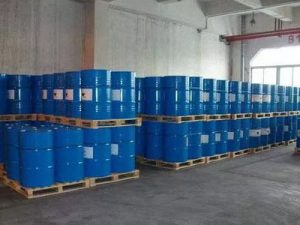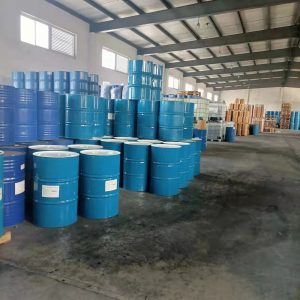Common problems and solutions in flexible foam production
In the actual foam production of the amount of accidents and problems encountered in the production is diverse, each accident production is caused by a variety of factors. In the analysis of accidents caused by complex factors, it is generally difficult to list all the influencing factors and the main factors that really play a role.

I. The following summarizes some of the frequently encountered accidents and causes:
1, coke center (reaction center temperature exceeds the raw material antioxidant temperature)
(1) Problems with the quality of polyether polyol: production, storage and transportation process so that the product water exceeds the standard, peroxide, low boiling point impurity content is too high, too high a concentration of metal ions, with the use of antioxidant type and concentration of improper;
(2) Formulation: low-density formula, TDI index is too high, the proportion of water and physical blowing agent in the blowing agent is improper, the amount of physical blowing agent is low, and the amount of water is too much;
(3) Climatic influences: high summer temperatures, slow heat dissipation, high material temperature, high air humidity, reaction center temperature exceeds the antioxidant temperature;
(4) Improper storage: when the TDI index rises, the heat energy of the pile increases during post-cooking resulting in higher internal temperatures and scorching.

2, compression deformation
(1) Polyether polyol: functionality less than 2.5, the proportion of ethylene oxide is greater than 8%, more small molecule components, the degree of unsaturation is greater than 0.05mol picture;
(2) Process conditions: the reaction center temperature is too low or too high, poor post-cooking, did not fully react or have part of the focal point;
(3) Process formula: TDI index is too low, excessive silicone oil stannous octanoate, low foam aeration, high closed cell rate.
3、Foam is too soft (decrease in hardness at the same density)
(1) Polyether polyol: low functionality, low hydroxyl value, large relative molecular mass;
(2) Process formulation: low amount of stannous octanoate, slow gel reaction speed, less water under the same amount of tin, more physical foaming agent, high dosage of silicone oil activity, low TDI index.
4、Bubble hole coarse
(1) Bad mixing; uneven mixing, short emulsion period;
(2) process formula: silicone oil dosage is lower than the lower limit, low dosage of stannous octanoate and poor activity, slow gelation speed.
5, higher than the set density
(1) Polyether polyol: low activity, large relative molecular mass;
(2) Process formulation: silicone oil dosage below the lower limit, low TDI index, low foaming index;
(3) Climatic conditions: low temperature, high air pressure.
6, collapse of the bubble hole (gas speed is greater than the gel speed)
(1) Polyether polyol: acid value seriously exceeds the standard, more impurities, low activity, large relative molecular weight;
(2) Process formula: amine dosage is more than tin dosage is less, TDI index is low, in the same tin dosage TDI index is too high, the gassing speed is greater than the gel speed, the skeleton strength is small and the collapse of the bubble or local holes.

Two,
1、High closed hole rate
(1) polyether polyol: high proportion of ethylene oxide, high activity, more often occur in the replacement of different activities of polyether polyol;.
(2) Process formulation: more stannous octanoate, high isocyanate activity, high cross-linking degree, fast cross-linking speed, too much amine and physical blowing agent causing low internal pressure in the foam, the foam elasticity can not open the hole, the TDI index is too large will also lead to a high rate of closure of the hole.
2、Shrinkage(gel speed is greater than foaming speed)
(1) High closed cell rate: shrinkage when cooling;
(2) Process conditions: low air temperature, low material temperature;
(3) Process formulation: excessive silicone oil, excessive physical foaming agent, TDI index is too low.
3、Internal crack
(1) Process conditions: low air temperature, high reaction center temperature;
(2) Process formula: low TDI index, more tin, high early foaming strength;
(3) High activity of silicone oil: low dosage.
4, top crack (hair gas gel speed imbalance)
(1) Process conditions: low temperature, low material temperature;
(2) Process formula: insufficient amount of catalyst, low amount of amine, poor quality of silicone oil.
5、Bottom corner crack (too much amine, too fast foaming)
Surface macroporous: excessive amount of physical foaming agent, poor quality of silicone oil and catalyst.
6、Poor low temperature performance of foam: poor intrinsic quality of polyether polyol, in the same hydroxyl value, low functionality, large degree of unsaturation, the same tin dosage, low TDI index.
7、Poor air permeability
(1) Climatic conditions: low temperature
(2) Raw materials: high polyether polyol, high silicone oil activity;
(3) Process formula: more tin, or tin dosage of the same amount of water and amine content is low, high TDI index.
8, poor elasticity
(1) Raw materials: high polyether polyol activity, small relative molecular mass, high silicone oil activity;
(2) Process formulation: large amount of silicone oil, more tin, more water at the same amount of tin, high TDI index.
Three
1, poor tensile strength: n52Q-6H
(1) Raw materials: too much low molecular polyether polyol, the same hydroxyl value of low functionality;
(2) process formula: tin less gel reaction is not good, in the same amount of tin, TDI index is high, less water crosslinking degree is low.
2, smoke when foaming: excess amine prompted by water and TDI reaction releases a lot of heat, low boiling point material evaporation and smoke. If it is not burnt center, most of the smoke is composed of TDI, low boiling point substances and monomer cycloalkane in polyether polyol.
3、Foam with white rib: fast reaction speed of foaming and gel, slow transfer speed in continuous foaming, local extrusion and generation of dense layer, resulting in white rib phenomenon. It should improve the transfer speed in time, or reduce the material temperature and catalyst dosage.
4、Foam crispy: more water in the formula, generate more diurea not dissolved in silicone oil, tin catalyst with poor crosslinking reaction is not sufficient, small relative molecular mass polyether polyol content, reaction temperature is too high, ether bond fracture reduces the strength of the foam.
5、Foam density is lower than the set value: the foaming index is too large due to inaccurate measurement, high temperature and low air pressure.
6、Foam with bottom skin, side skin, bottom step cavitation: more tin and less amine, slow foaming speed, fast gel speed, too low band temperature in continuous foaming.
7、Elongation rate is large
(1) Raw material: polyether polyol with high activity and small functionality;
(2) Process formula: low TDI index crosslinking is insufficient, more tin, more silicone oil;
(3) high temperature

